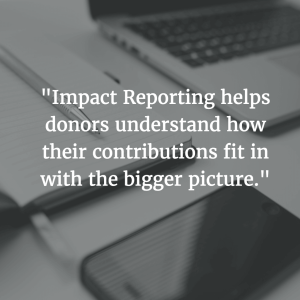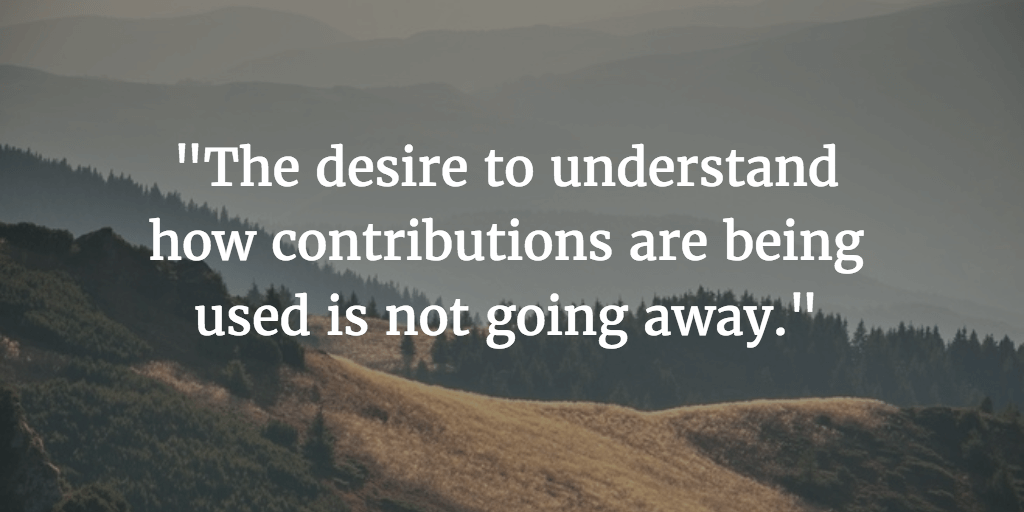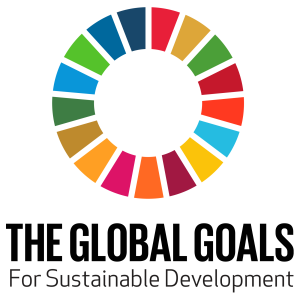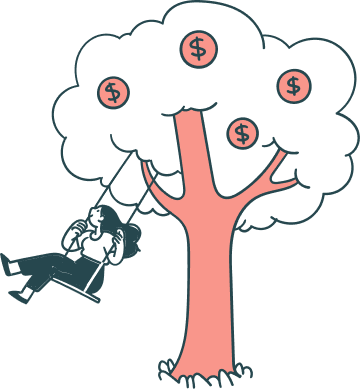We live in a world where it is no longer acceptable to be socially unaware. With new markets touting their ethically sourced and sustainably developed products, it’s no wonder that consumers have placed a greater focus on their consumption and their resource allocation.
Profitability is second to the impact of the product being offered. Will a consumer choose one handmade bowl over another because it can fund the education of two children for a year?
In the same vein, it’s no longer enough to say you have made a donation or volunteered regularly with a charity if you don’t know how you’ve specifically impacted the community you are serving.
Donors are becoming increasingly particular about what compels them to make contributions to organizations.
Where “Impact Reporting” Comes In
Impact reporting is a way for an NPO to explain how donations are directly serving the source. It is beneficial for organizations to provide donors with this type of information that they are seeking. Impact reporting can really bolster donations and volunteerism in a meaningful way.
So, I’ll ask the obvious question: why don’t more organizations report on impact?
In the US there are approximately 1.5 million nonprofit organizations in operation today. For an uninformed donor, it may seem a daunting task to find an organization that is reputable, and is doing work that makes an impact in their chosen community.
Fortunately, there are organizations whose only goal is to help inform donors by grading, monitoring, and measuring how donations flow into and out of nonprofits [in relation to the goal they report].
Organizations like the BBB’s Wise Giving Alliance, Guidestar, Charity Watch, and Charity Navigator are all great resources to see if an organization has historically contributed a majority of their donations to their mission and show the breakdown of those donations within that mission.
But while the reporting these organizations provide is necessary and extremely helpful, it does not offer insight into how the organizations measure up against their stated yearly goals.
As a way to bridge the information gap, nonprofits create annual reports for their donors. These reports provide a broad overview of donations that were received by a nonprofit and how they were used to accomplish objectives.
Not only do these reports provide a more personal look at the work performed by the organization, but they help donors understand how their contributions fit in with the bigger picture.
When an organization provides insight into how donations are being used, it adds a depth and breadth to the mission that could not be gained any other way.
International Justice Mission does this by attaching stories of men, women, and children that have been directly helped by their organization.
It is one thing to know you gave money to help widows provide for their families—it’s another to see the faces of those widows and their children.
Increasing transparency helps organizations demonstrate the value of the donations they receive.
While it may not be easy to correlate dollars directly to actions, estimated costs allow donors to understand how their funds impacted the work that was made possible.
The Challenges of Reporting
The nonprofit market is robust and diverse, but that is often what makes impact reporting so difficult.
With a market so broad, there are endless opportunities to compare similar organizations without much consideration for how these organizations intend to accomplish their intentions. How does an organization use reporting to explain why they do what they do, why their technique is the best way to go about it, and why people should trust them enough to donate?
Limited resources for marketing and execution and inadequate framework often make it difficult to report whether annual goals have been met.
The data provided by the traditional annual report is generally void of any actual insight into the continuing impact that was made by donations and volunteering conducted over the previous year. Also, these reports are oftentimes difficult to understand.
For donors, the desire to understand how contributions are being used is not going away. As nonprofits mature and adapt to the changing market, they will need to incorporate a plan to measure impact in a snapshot (annual reporting) as well as long term impact in a year-over-year reporting model.
Year-over-year numbers will encourage donors to stay engaged by showing them the evolution of programs and get to see how communities are impacted in the long term.
Working Together to Do Good
In 2015 the United Nations launched an initiative, The Global Goals, to develop a partnership between corporations and NGOs as a means to end extreme poverty, fight inequality and injustice, and fix climate change (among other goals) by 2030.
By calling on corporations to engage their donors in a more informed manner, greater attention can be brought to organizations that are operating impactful programs around the world.
Establishing partnerships between nonprofits and corporations allows for more constructive reporting to be created so impact information can be transmitted fluidly and more readily than in the past.
The UN Global Goals attempt to solve problems that are unfortunately all too common.
Any attempt to eradicate them will require collaborative effort. Reporting is just one way to move the actions of nonprofits and the resources of the people into the same direction.
Ultimately, the need to report the impact of donations and volunteerism is going to continue to rise.
To appeal to more informed donors, organizations will need to reveal whether they are hitting their goals and how they plan to focus their efforts going forward.
By reporting to the donor base, they build a rapport that could translate to a massive increase in donations and volunteerism.
This post originally appeared here and was written by Amanda Robinson of YourCause.
Amanda Robinson is the Special Projects Team Lead at YourCause. She holds an MS in Merchandising & BA in History from the University of North Texas. When she’s not working, you can find her volunteering, spending time with family, traveling to see friends scattered all over the globe, and ensuring her Yorkie, Izzy, is the most spoiled dog in the metroplex.





